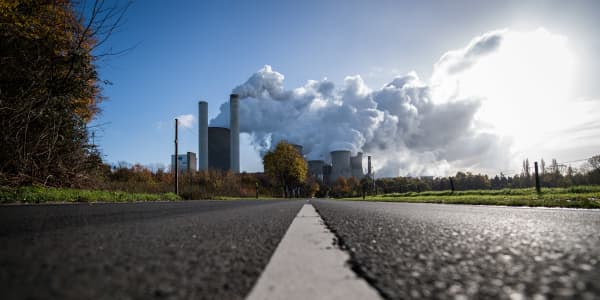When someone thinks about how a house is built, images of bustling, noisy and dusty construction sites spring to mind.
Our hunger for new buildings and internal space has an impact on the planet. A recent report from the Global Alliance for Buildings and Construction, International Energy Agency and the UN Environment Programme, said building construction and operations were, globally, responsible for 36% of final energy use in 2018.
Published in December 2019, the Global Status Report for Buildings and Construction also stated that, worldwide, the sector accounted for 39% of energy-related carbon dioxide emissions in 2018.
As demand for new residential and commercial structures grows, could modular, pre-fabricated buildings manufactured "off-site" have a role to play in the future of sustainable construction?
The idea of pre-assembled or pre-fabricated homes is not new. In the U.K., for instance, many of these structures were developed to tackle a significant housing shortage following the end of World War II.
All in all, 156,623 "temporary prefabricated bungalows" were put up in the U.K. between 1945 and 1949, according to The Prefab Museum.
More than 70 years later, as concerns about construction's impact on the environment grow, the notion of modular, pre-built and sustainable developments is starting to gain traction.
"Modular and offsite manufactured buildings that are designed and delivered to a high standard can offer a range of environmental benefits," Richard Twinn, from the U.K. Green Building Council (UKGBC), a charity and "membership network" focused on the built environment and sustainability, told CNBC via email.
"During the construction process there is the potential to significantly reduce the amount of waste produced, which also delivers associated carbon reductions," Twinn, who is senior manager, Advancing Net Zero, at the UKGBC said.
In practice, pre-built and modular structures take many shapes. Across the U.K., a host of residential developments using these techniques are starting to spring up.
In southeast London, for example, the Royal Borough of Greenwich is now home to Lister Terrace, a development of four new residences that were constructed at a facility in Yorkshire and then lowered into place using cranes.
The council homes, which were "precision engineered" at the factory of a firm called ilke Homes, have solar panels and use air source heat pumps instead of gas boilers.
They have been described as being "extremely air-tight" — which helps to cut heat loss — and "capable of generating more energy than they consume."
The speed with which a modular development can be completed is another advantage, a point reinforced by the UKGBC's Twinn.
"Reductions in construction times can also help to minimise the emissions from a construction site and improve local air quality," he explained.
"Precision engineering of an offsite manufactured solution can also offer significant improvements in thermal performance, when the building is in use, by improving airtightness and helping to reduce the performance gap — between modelled and actual energy use — that is often seen in new buildings," he added.
These types of buildings are not restricted to the residential sector. Earlier this month, Northumbria Healthcare NHS Foundation Trust, in the north of England, announced that work had started on an £8 million ($10.3 million) "healthcare sterilisation facility."
According to the Trust, the centralized sterilisation service department, or CSSD, will be a carbon neutral facility and 90% of the scheme "will be completed offsite, reducing construction time and cost."
Back in the Royal Borough of Greenwich, authorities appear keen to pursue the development of modular buildings.
In a statement sent to CNBC via email, Anthony Okereke, cabinet member for housing, said the borough was "unflinching in its commitment to both resolving the housing crisis and tackling climate change."
"We are building hundreds of zero-carbon council homes across the borough with our Greenwich Builds programme, for which Lister Terrace is the successful pilot scheme," he explained.
Okereke went on to describe modular construction as being "crucial in allowing us to build these sustainable homes quickly, efficiently and with minimum disruption, whilst maintaining the highest standards of durability and quality."




